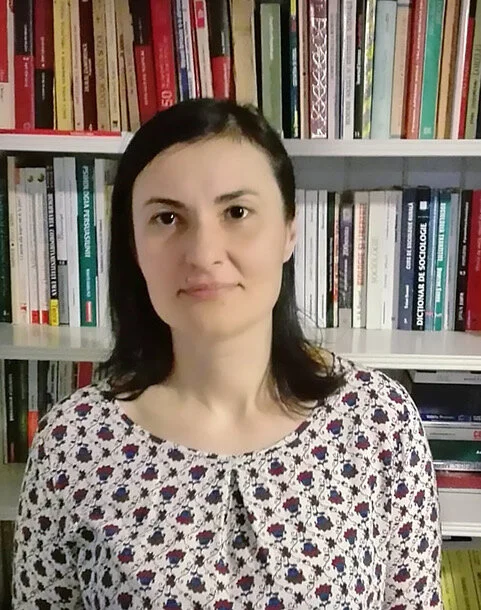Even as a positive image, visual ageism is always harmful
Presenting older people as young ones is an unrealistic picture that conditions the perception of the onlooker
Loredana Ivan, associate professor of the College of Communication and Public Relations at the National University of Political Studies and Public Administration of Bucharest, Romania
Anytime the representation of older people in the media has made us feel uncomfortable, we didn’t have a word to address the issue. But now we do: it is “visual ageism.” The definition comes from a brand new research conducted by Loredana Ivan, associate professor of the College of Communication and Public Relations at the National University of Political Studies and Public Administration of Bucharest, Romania and Eugène Loss, associate professor of Law, Economics and Governance at Utrecht University in the Netherlands. Together they signed the paper titled: “Visual Ageism in the Media.” In our chat, professor Ivan revealed totally unexpected angles to our image of society.
The definition of “visual ageism” is very compelling. Can you tell us more about it?
Visual ageism is a concept that has been missing in the literature so far. From the advent of the term “ageism” in 1969, the focus has always been on systematic stereotyping and discrimination and how this type of communication spread among the population. Our interest, instead, was focused on the representation of older people in the visual media. “Visual ageism” describes the societal practice of visually underrepresenting older people or misrepresenting them in a prejudiced way.
How did you arrive at this definition?
We took print and TV advertising and TV programs into consideration. Media content is a continuous reflection of societal practices and it influences daily interactions. For a researcher, it’s also a way to study the logic according to which the societal construction of aging takes place.
We studied the representation of third and fourth agers and we noticed some patterns. They are depicted in peripheral or minor roles without positive attributes or over-homogenized, their portraits are non-realistic, exaggerated or distorted. Think about the stereotypical teen-ager, but with gray hair.
These images are always kind of creepy, but it’s difficult to understand why. Can you clarify their hidden message?
Presenting older people as young ones not only is an unrealistic picture, but it puts a lot of pressure on the older onlooker. This type of image says that there’s something good only in a younger looking body and face, but one cannot be a teen-ager forever.
While it’s not realistic, it also sends a subtler message because it implies that the failure to adhere to this younger-look stereotype is the responsibility of the individual. Whereas the truth is that the ability to take care of one’s self is a consequence of social forces that, for instance, push older workers out of the job market or tend to impoverish female workers.
So, even when it appears as a positive image, visual ageism is always harmful, because it is an obstacle to the way of thinking about aging in a more objective way for the individual and in a more project-oriented way for the policy makers.
Are there other implications?
Yes. Think about how older people are depicted in the visual media: they are in couples, they are happy, healthy, and enjoy life. But not everybody is in a couple or has the resources to travel; not to mention the dominance of white people.
Furthermore, in the West, the aging-well ideology is putting pressure on the individual and it leads to a the marginalization of the aging process with the exclusion of the older old, especially those who are no longer able to enjoy the so-called successful aging. The different ways in which people make meaning in their lives as they age is not taken into consideration.
Do you think that visual ageism conditions us to think about aging in a certain way?
Media studies focus on the content and do not generally take the reaction of the audience into consideration. We don’t know for sure if it influences the perception, because there’s a gap in the research. But I believe there might be a sort of conditioning: when we ask someone to draw old people, even the children’s drawings reflect the stereotypes.
Older people are represented as frail, sick or, in case of positive aspects, preparing food for others. But there’s more: if we ask older people to draw themselves, the images are self-stereotyped. What is surprising is that the negative aspects prevail and they are more encompassed with the third age. Adults in the fourth age continue to be underrepresented and evidence shows a self-ageist tendency amongst the third agers who would not like to be associated with the next age group.
Your research was focused on studies in traditional media. Do you have the feeling that the internet is following the same “rules”?
There are not many researches available for the web. But magazine and TV series have moved online, bringing their rules along. There’s an interplay between old and new media and that, at the end, is even less regulated than the traditional media. Whereas a group can oppose communication that is considered offensive, we do not possess a specific code of behavior for the representation of older people.
What could be a better way to represent older groups of people in the media?
We suggest to counteract visual ageism with the concept of “Design for dynamic diversity,” an approach developed by Peter Gregor and Alan Newell of the University of Dundee. Applied to this scenario, it would imply the use of a multiplicity of images and more nuanced images to combat the over-homogeneity in the representation of older adults. Very simply: inclusion and diversity could be a way to reduce visual ageism even in a more aging society.
